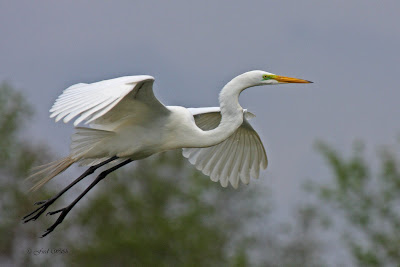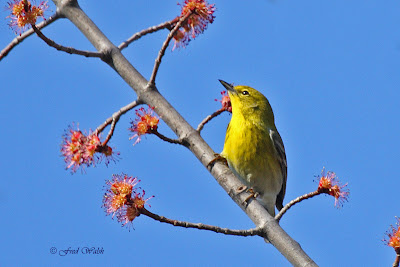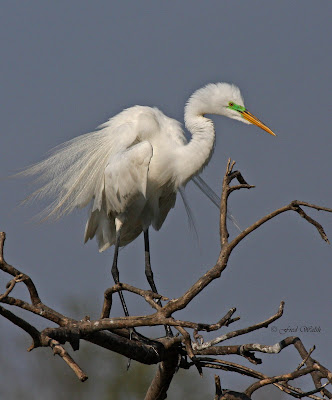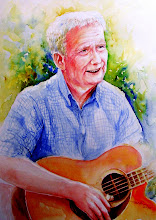 These pictures were taken on 21st April, 2008 in our back yard. This is the most common Woodpecker in the southeast and has recently made it's way into southern Ontario. Although it's extending it's range and population, European Starlings take over about half of their nests.
These pictures were taken on 21st April, 2008 in our back yard. This is the most common Woodpecker in the southeast and has recently made it's way into southern Ontario. Although it's extending it's range and population, European Starlings take over about half of their nests.
Wednesday, April 23, 2008
Red-bellied Woodpecker
Posted by
Fred's photos
at
5:49 AM
2
comments
![]()
Yellow rumped Warbler, Myrtle race, male
Posted by
Fred's photos
at
5:44 AM
0
comments
![]()
Pine Warbler
 These pictures were taken on 20th April, 2008 in our back yard. These pictures are quite as clear as I would like but these guys are hard to photograph because they're usually high up in a tree. This guy must be confused: he's a Pine Warbler but he's in a Maple tree.
These pictures were taken on 20th April, 2008 in our back yard. These pictures are quite as clear as I would like but these guys are hard to photograph because they're usually high up in a tree. This guy must be confused: he's a Pine Warbler but he's in a Maple tree.
Posted by
Fred's photos
at
5:40 AM
0
comments
![]()
Chipping Sparrow
 This picture was taken on 21st April, 2008 in our back yard. He's a pretty common little guy but kind of cute with his rusty colored cap.
This picture was taken on 21st April, 2008 in our back yard. He's a pretty common little guy but kind of cute with his rusty colored cap.
Posted by
Fred's photos
at
5:36 AM
0
comments
![]()
Belted Kingfisher, female
These pictures were taken on 19th April, 2008 at the edge of Lake Huron near our home. The male just has a white belly and the female has a rusty colored belt that circles their belly. On these pictures you can see that the belt doesn't go all the way around. Possibly it's an immature. If you know, please leave a comment or send me an email.
The male just has a white belly and the female has a rusty colored belt that circles their belly. On these pictures you can see that the belt doesn't go all the way around. Possibly it's an immature. If you know, please leave a comment or send me an email.
Posted by
Fred's photos
at
5:29 AM
0
comments
![]()
Hooded Merganser, male
This picture was taken on 14th April, 2008 in our back yard. For me, it's kind of a sad picture. For the last three years we've had a pair of Hooded Mergansers nest at the edge of the pond in our back yard. This year there was no female and the male only came once, sat at the edge of the pond for an hour or so and then left. I'm assuming that something has happened to the female.
Posted by
Fred's photos
at
5:20 AM
0
comments
![]()
Common Merganser
 These pictures were taken on 16th April, 2008 in Lake Huron near our home. My mentor, Russ Chantler has been harrassing me telling me that if I want a good picture of a bird on the water, I have to get down to their level. These pictures were taken about six inches above water level with me laying on my belly at the waters edge with some blankets over me for camouflage. It wasn't a very comfortable position, but Russ is right, it does make for a much more dramatic picture.
These pictures were taken on 16th April, 2008 in Lake Huron near our home. My mentor, Russ Chantler has been harrassing me telling me that if I want a good picture of a bird on the water, I have to get down to their level. These pictures were taken about six inches above water level with me laying on my belly at the waters edge with some blankets over me for camouflage. It wasn't a very comfortable position, but Russ is right, it does make for a much more dramatic picture.
Posted by
Fred's photos
at
5:09 AM
1 comments
![]()
Bufflehead Ducks
Posted by
Fred's photos
at
5:04 AM
0
comments
![]()
Black Capped Chickadee
 These pictures were taken on 19th & 21st April, 2008 in our back yard. These little guys are so tame that they'll land on your hand. I haven't been successful in doing that because I'm usually too busy with a camera in my hand.
These pictures were taken on 19th & 21st April, 2008 in our back yard. These little guys are so tame that they'll land on your hand. I haven't been successful in doing that because I'm usually too busy with a camera in my hand.
Posted by
Fred's photos
at
4:57 AM
0
comments
![]()
Wednesday, April 16, 2008
Common Merganser
 These pictures were taken on April 10th, 2008 in Lake Huron near our home just south of Port Elgin, Ontario. Mergansers are diving ducks whose main food source is fish. They usually nest in tree cavities and the young leave their nest when they are about one day old. When chicks are first born, the parents don't feed them, they forage for water insects themselves and when they're about 10 days old will switch mainly to fish as their diet. The top picture is the male and the lower one is the female.
These pictures were taken on April 10th, 2008 in Lake Huron near our home just south of Port Elgin, Ontario. Mergansers are diving ducks whose main food source is fish. They usually nest in tree cavities and the young leave their nest when they are about one day old. When chicks are first born, the parents don't feed them, they forage for water insects themselves and when they're about 10 days old will switch mainly to fish as their diet. The top picture is the male and the lower one is the female.
Posted by
Fred's photos
at
4:41 AM
0
comments
![]()
Red-breasted Merganser
 These pictures were taken on April 10th, 2008 in Lake Huron, near our home just south of Port Elgin, Ontario. They are a fairly large diving duck whose main diet is fish and other aquatic insects, crustaceans and frogs. The two top pictures are males while the bottom picture is a female.
These pictures were taken on April 10th, 2008 in Lake Huron, near our home just south of Port Elgin, Ontario. They are a fairly large diving duck whose main diet is fish and other aquatic insects, crustaceans and frogs. The two top pictures are males while the bottom picture is a female.
Posted by
Fred's photos
at
4:30 AM
0
comments
![]()
Bufflehead Duck
 This picture was taken on April 10th at the edge of Lake Huron near our home near Port Elgin, Ontario. Buffleheads are the smallest North American diving duck. They are also monogamus, staying with the same mate for years. They nest in abandoned Flicker tree cavities and cavities made by other woodpeckers.
This picture was taken on April 10th at the edge of Lake Huron near our home near Port Elgin, Ontario. Buffleheads are the smallest North American diving duck. They are also monogamus, staying with the same mate for years. They nest in abandoned Flicker tree cavities and cavities made by other woodpeckers.
Posted by
Fred's photos
at
4:22 AM
0
comments
![]()
Purple Martin
These pictures were taken on April 1st, 2008 at the High Island RV Park, High Island, Texas. Purple Martins very seldom ever touch the ground. All of their food is insects taken in the air and they even get water in flight by flying low over water and skimming the water with their lower mandible. Although Purple Martins entire diet is flying insects, they don't eat that many mosquito's. That's because they usually fly higher than mosquito's go. They very seldom take insects at ground level.
Posted by
Fred's photos
at
3:46 AM
0
comments
![]()
Roseate Spoonbill
These pictures were taken on March 23rd and 29th, 2008 at the High Island Rookery, High Island, Texas. I recently published a very similar flight shot to the one shown here. Actually, this shot was taken 1/3rd of a second before the other shot. Double click on the images and you'll see this shot is a little bit clearer and the wings show just a little bit better. The best technique for shooting flight shots is focus on the bird and hold the shutter button down so that you keep shooting as many shots as possible and then hope for the best. If you're lucky, you'll get one or two good ones.
Posted by
Fred's photos
at
3:35 AM
0
comments
![]()
Snowy Egret
These pictures were taken on March 23rd, 2008 at the High Island Rookery, High Island, Texas. These little guys can really put on a show during mating season. They are very territorial and when I was there, two pair were trying to nest in the same area . It just lead to one chase after another and of course showing off all their fluffy, pretty feathers, which they only have during mating season.
. It just lead to one chase after another and of course showing off all their fluffy, pretty feathers, which they only have during mating season.
Posted by
Fred's photos
at
3:27 AM
1 comments
![]()
Great Egret
This picture was taken at the High Island Rookery, High Island, Texas on March 30th, 2008. Flight shots can be very tricky to take. For the longest time I had trouble finding the bird in my viewfinder, let alone getting the camera to focus on it. Practice is the answer. If you double click on the image, you'll find it's perfectly clear even when blown up to a larger size.
Posted by
Fred's photos
at
3:21 AM
1 comments
![]()
Alligator
This picture was taken at the High Island Rookery, High Island, Texas on March 23rd, 2008. Probably the main reason that all the birds nest on the Island at the Rookery is because there are no predators there. That's because the waters have quite a few alligators so normal predators won't venture out onto the Island. Of course, there is a bit of a price to pay for this protection: any chicks that happen to fall out of the nest are gobbled up within seconds of hitting the ground. However, these chicks that fall probably wouldn't have made it anyway. I saw one Great Egret chick that managed to climb out of the nest  and was on the same branch, but about two feet away from the nest. It's Mother completely ignored it and just went about looking after the remaining chicks. I watched for about two hours but the chick was still in the same spot. The next day the chick was gone. This seems very cruel to most of us but I guess this is Mother natures way of doing survival of the fittest. Great Egret chicks can be very aggressive to other chicks where they will peck at smaller chicks to achieve dominance and a larger share of the food. This chick may have been driven out of the nest.
and was on the same branch, but about two feet away from the nest. It's Mother completely ignored it and just went about looking after the remaining chicks. I watched for about two hours but the chick was still in the same spot. The next day the chick was gone. This seems very cruel to most of us but I guess this is Mother natures way of doing survival of the fittest. Great Egret chicks can be very aggressive to other chicks where they will peck at smaller chicks to achieve dominance and a larger share of the food. This chick may have been driven out of the nest.
Posted by
Fred's photos
at
2:55 AM
0
comments
![]()
Tuesday, April 08, 2008
Yellow Rumped Warbler
 This picture was taken on 24th March, 2008 at the High Island Rookery, High Island, Texas. The warblers were supposed to be at the Boy Scout Woods, but very few showed up while we were there, including this guy that didn't know he was supposed to be at the Boy Scout Woods.
This picture was taken on 24th March, 2008 at the High Island Rookery, High Island, Texas. The warblers were supposed to be at the Boy Scout Woods, but very few showed up while we were there, including this guy that didn't know he was supposed to be at the Boy Scout Woods.
Posted by
Fred's photos
at
5:41 AM
0
comments
![]()
Roseate Spoonbill
These pictures were taken on 23rd March, 2008 at the High Island Rookery, High Island, Texas. During breeding season these guys really like to spread their wings and show off their colors. I think they succeeded. They got my attention.
Posted by
Fred's photos
at
5:30 AM
0
comments
![]()
Snowy Egret
These pictures were taken on 29th March, 2008 at the High Island Rookery, High Island, Texas. Shooting these birds during breeding season can be exciting because of all the feathery plummage and the birds are doing their best to show off. It spoils a person for the remaining 10 months of the year though because the birds aren't nearly as pretty.
Posted by
Fred's photos
at
5:25 AM
0
comments
![]()
Great Egret
These pictures were taken on 23rd March, 2008 at the High Island Rookery, High Island Texas. The Rookery is a birder's paradise, especially if you're into photography. You're close enough to the birds that you can get a nice clean shot. I took more than 700 pictures on this day alone. I've managed to delete about 600 and I'll be processing the remainder for some time to come.
Posted by
Fred's photos
at
5:12 AM
0
comments
![]()
Saturday, April 05, 2008
Roseate Spoonbill
These pictures were taken between 23rd & 30th March, 2008 at the High Island Rookery, Texas. During breeding season, they are much more colourful than during the rest of the year. In some of the pictures, you'll note some juveniles that are much less colourful. It's also interesting to watch some of their mating rituals. They seem to have sword fights with their bills and one of their rituals is they will sit side by side on tree or branch and bow their heads in unison, then raise their heads in unison. It's quite interesting to watch.
Posted by
Fred's photos
at
3:43 PM
1 comments
![]()









































